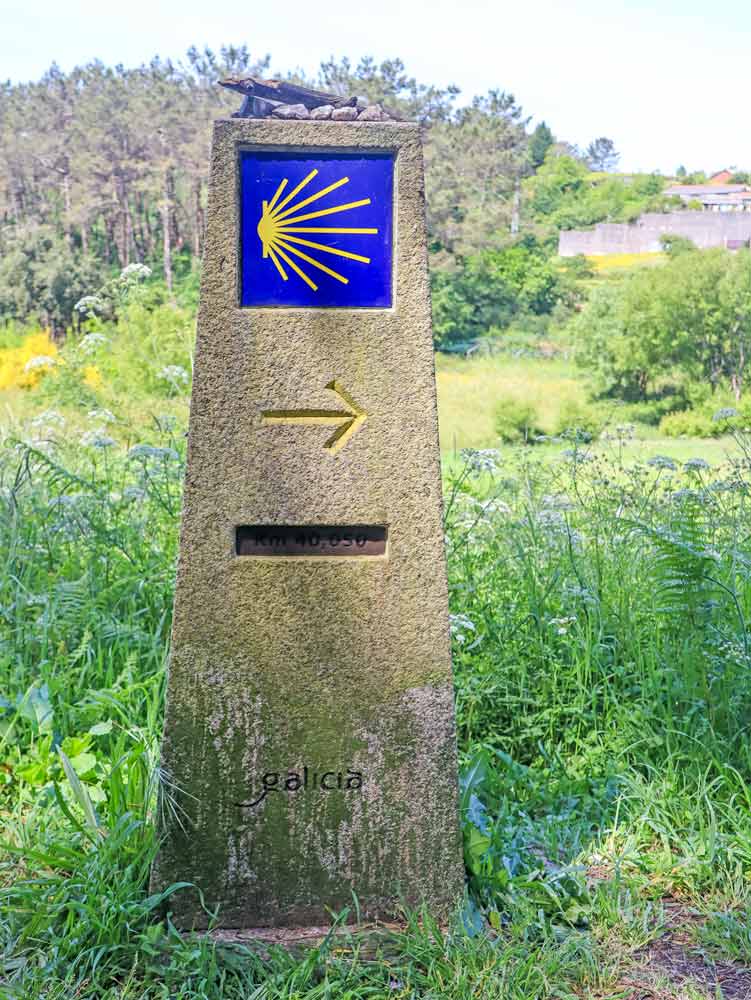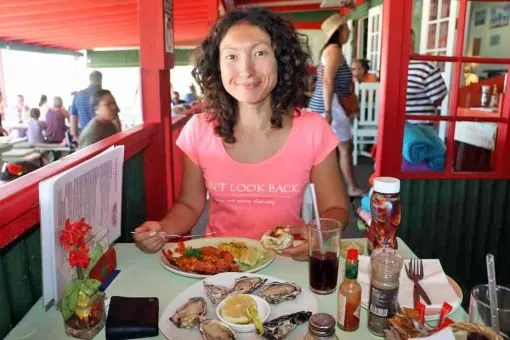For many people walking the Camino de Santiago is a lifetime experience. When it comes to planning an important trip that you have been dreaming about for years it can be stressful. You might feel overwhelmed without knowing where to start. And it is absolutely normal. You are not alone in that. Thousands of people walk the Camino every year and you can be one of them. If they can do it you can do it too on your own or with some help.


I have planned many Camino trips (not only for myself but for other people). In this post I give the main steps for planning the Camino de Santiago so you can do it yourself.
Step 1. Decide how much time you have and when you want to go
Some people have only two weeks of holiday a year, some might have unlimited time frames. Decide how much time you have for the Camino and when you have it.
I recommend having at least 1 week to walk the Camino to have enough time to experience it. You will probably need at least 1 day to get to the Camino and 1 day to get back home. So if you have 1 week it leaves you with 5 days to walk.
Don’t worry if you don’t have enough time to complete the entire route. You can do it in parts or start somewhere closer to Santiago.
Step 2. Decide how far you want to walk every day
Outline your desirable daily distance. Base the decision on your level of fitness, don’t chase other people’s itinerary. If you are comfortable walking 10 miles/16 km a day then it’s your distance. Don’t worry if it’s shorter than the standard itinerary. You should be comfortable with the walk.
Once you know how much time you have and how far you want to walk, multiply the two numbers to get the total distance of your walk. E.g. you have 10 days to walk and want to walk 10 miles/16 km per day. We get a total of 100 mi/160 km.
Step 3. Choose the Camino route
Now when you have your total distance you can decide on the route. Choosing the right Camino is important. There are 7 main routes in Spain and Portugal. Their sceneries, distances, and facilities vary greatly. For first-time pilgrims who have never done a long-distance walk I suggest choosing the Camino Frances or the Portuguese Camino from Porto. These are the two most popular routes that have good infrastructure for pilgrims. They are easier to plan and break down into shorter walking stages.
Remember, you don’t have to begin the walk from the official starting point. You can start pretty much anywhere along the route. Let’s say you choose the Portuguese Camino and want to walk 100 mi/160 km so you can start from Ponte de Lima which is around 100 mi/160 km from Santiago de Compostela.


Step 4. Start training for the Camino
Walking the Camino de Santiago requires preparation. You can start preparing for the Camino as early as a year in advance but usually, 4-6 months is enough. It’s possible to do the Camino as a last-minute walk but in this case, you should be ready to face some difficulties if you are not used to long walking days.
We have a detailed post with easy training steps that you can follow to prepare for your walk.
If you’re an outdoor person, and used to hiking and walking long distances you don’t need any special training.
If you want to have more insights of your training process I recommend buying a fitness watch. We use our Garmin Fenix watches for training, hiking, and walking. They give a lot of information such as distances, total elevation gain/loss, calories used, heart rate, route maps, recovery time, etc.
Step 5. Get the right shoes
Having the right shoes for walking is very important. You shouldn’t walk in a new pair of shoes. Even the best shoes will likely give blisters if they are new and you walk over 10 mi a day in them. If you already have a pair – great, you can start training in them.
If you need an advice on the right shoes for the Camino please, check our post on the best walking shoes.
Blisters are a common problem on the Camino. I recommend wearing Merino wool socks to minimize your chances of getting blisters.


Step 6. Decide on the luggage
Decide if you want to walk with a big backpack and carry all your stuff or rather use a luggage transfer service. Walking with a big pack is a lot more difficult than with a small day pack. It is ok to use a luggage transfer service on the Camino, it doesn’t make you less of a pilgrim. There are several companies that offer the service on different Camino routes.
If you have some extra luggage that you won’t need on the Camino you can send it straight to Santiago de Compostela. It will be stored at the post office near the Cathedral till your arrival. Check the Correos website for more information.
If you decide to walk with a big pack then make sure to choose a good one that is comfortable to walk with for hours every day.
Step 7. Book your trip
Now you know when you want to go and what route to walk. Find out how to get to the starting point (the place from where you want to start) of your chosen Camino route. What is the nearest airport? Check what airlines fly there from your hometown?
Depending on where you’re coming from your international flight might be your biggest expense. If you come from overseas e.g. the US, Australia, Canada, or South Africa I suggest starting looking for tickets several months before the trip. Use Skyscanner to look for flights and find which airlines serve the route.
If you’re going to fly with one of the European budget airlines check their luggage allowance. Usually, they’re different for international and local flights. Cheap local flights include only hand luggage if you have check-in luggage you have to pay extra.


Step 8. Outline your itinerary
Plan your walking stages according to your desired distance. You can use our PDFs and plan it yourself or use our Camino planning service if you want a customized itinerary. If you are planning to walk the standard stages (as suggested in the PDFs or guidebooks) then it is very easy – just download the existing itinerary and follow it.
If you want to stay in private rooms it is a good idea to pre book them, maybe not for the entire route at once but some time ahead. Once you have your itinerary start booking accommodation.
Step 9. Download everything you need on your phone
Download useful files and apps that you will need for the walk
- PDFs with walking stages and places to stay
- GPX files of the route (if needed)
- Camino app (if needed)
- Currency exchange app (if you come from outside the Euro zone)
- Bolt/Uber apps (cheaper than taxis and convenient to use in case you need a ride)
- Language app (can be useful if you don’t speak any Spanish)
- Download offline Google.map of the country/region that your route goes through
Step 10. Pack for the trip
And finally the last step. Pack your backpack/suitcase. Make a packing check-list and tick the items off as you pack them. If you’re going to use the luggage transfer service than there is nothing to worry about you can pack the same way you usually pack for a holiday. The limit is 20 km per luggage item. If you’re planning to carry your backpack then try to pack as light as possible.


Camino de Santiago planning resources
There are many online resources and apps that you can use for planning your Camino de Santiago walk. Most of them are free which makes it easy to arrange the walk.
Local Camino Associations
Find your local Camino association. Many countries have Camino associations that can assist you if you have any questions, looking for a company, want to get a Credential, etc. Many associations have special events and meetings dedicated to the Camino where you can discuss different topics, meet people, tell stories, etc. It might be helpful to connect with other pilgrims from your country.


Don’t forget
To buy travel insurance. Read more about travel insurance for the Camino or get an instant personalized quote in a minute or two right here. World Nomads offers simple and flexible travel insurance. Buy at home or while traveling and claim online from anywhere in the world.
To get an adaptor. If you come from the US, Australia, Canada, the UK, Ireland, and some other countries you might need a power adapter. In Spain and Portugal, they have Type F plugs like in most European countries.
To get a Credential (pilgrim’s passport). It is a small book with places for stamps. You collect stamps from albergues, hotels, cafes, restaurants, and churches along the Camino route. Once in Santiago de Compostela you can go to the Pilgrim’s Reception Office, show your Credential with stamps and get the Compostela certificate for completing the Camino. You can get the Credential at your local Camino association, albergues, information offices, churches, etc.


The pretty half of Stingy Nomads, responsible for all our land adventures (hiking, climbing, walking the Camino) and following them write-ups. Alya loves walking since she was a child, she prefers to walk 1000 km with a backpack rather than to do a 10 000 km road trip (actually any road trip). Alya is a big fan of Latin America, the Spanish language, and dancing. Every time we go away she desperately misses our dog Chile.


